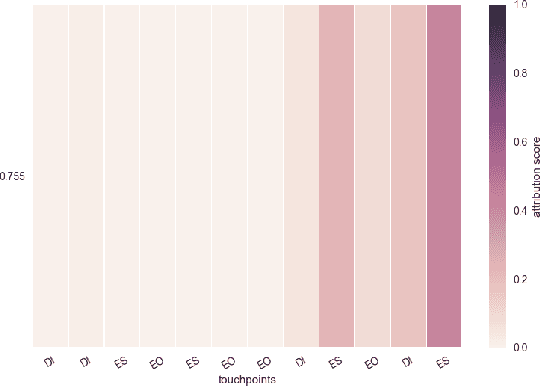Sai Kumar Arava
Improving the Capabilities of Large Language Model Based Marketing Analytics Copilots With Semantic Search And Fine-Tuning
Apr 16, 2024Abstract:Artificial intelligence (AI) is widely deployed to solve problems related to marketing attribution and budget optimization. However, AI models can be quite complex, and it can be difficult to understand model workings and insights without extensive implementation teams. In principle, recently developed large language models (LLMs), like GPT-4, can be deployed to provide marketing insights, reducing the time and effort required to make critical decisions. In practice, there are substantial challenges that need to be overcome to reliably use such models. We focus on domain-specific question-answering, SQL generation needed for data retrieval, and tabular analysis and show how a combination of semantic search, prompt engineering, and fine-tuning can be applied to dramatically improve the ability of LLMs to execute these tasks accurately. We compare both proprietary models, like GPT-4, and open-source models, like Llama-2-70b, as well as various embedding methods. These models are tested on sample use cases specific to marketing mix modeling and attribution.
* 16 pages, 5 figures, presented at the 2nd International Conference on NLP & AI (NLPAI 2024)
Deep Neural Net with Attention for Multi-channel Multi-touch Attribution
Sep 06, 2018



Abstract:Customers are usually exposed to online digital advertisement channels, such as email marketing, display advertising, paid search engine marketing, along their way to purchase or subscribe products( aka. conversion). The marketers track all the customer journey data and try to measure the effectiveness of each advertising channel. The inference about the influence of each channel plays an important role in budget allocation and inventory pricing decisions. Several simplistic rule-based strategies and data-driven algorithmic strategies have been widely used in marketing field, but they do not address the issues, such as channel interaction, time dependency, user characteristics. In this paper, we propose a novel attribution algorithm based on deep learning to assess the impact of each advertising channel. We present Deep Neural Net With Attention multi-touch attribution model (DNAMTA) model in a supervised learning fashion of predicting if a series of events leads to conversion, and it leads us to have a deep understanding of the dynamic interaction effects between media channels. DNAMTA also incorporates user-context information, such as user demographics and behavior, as control variables to reduce the estimation biases of media effects. We used computational experiment of large real world marketing dataset to demonstrate that our proposed model is superior to existing methods in both conversion prediction and media channel influence evaluation.
 Add to Chrome
Add to Chrome Add to Firefox
Add to Firefox Add to Edge
Add to Edge